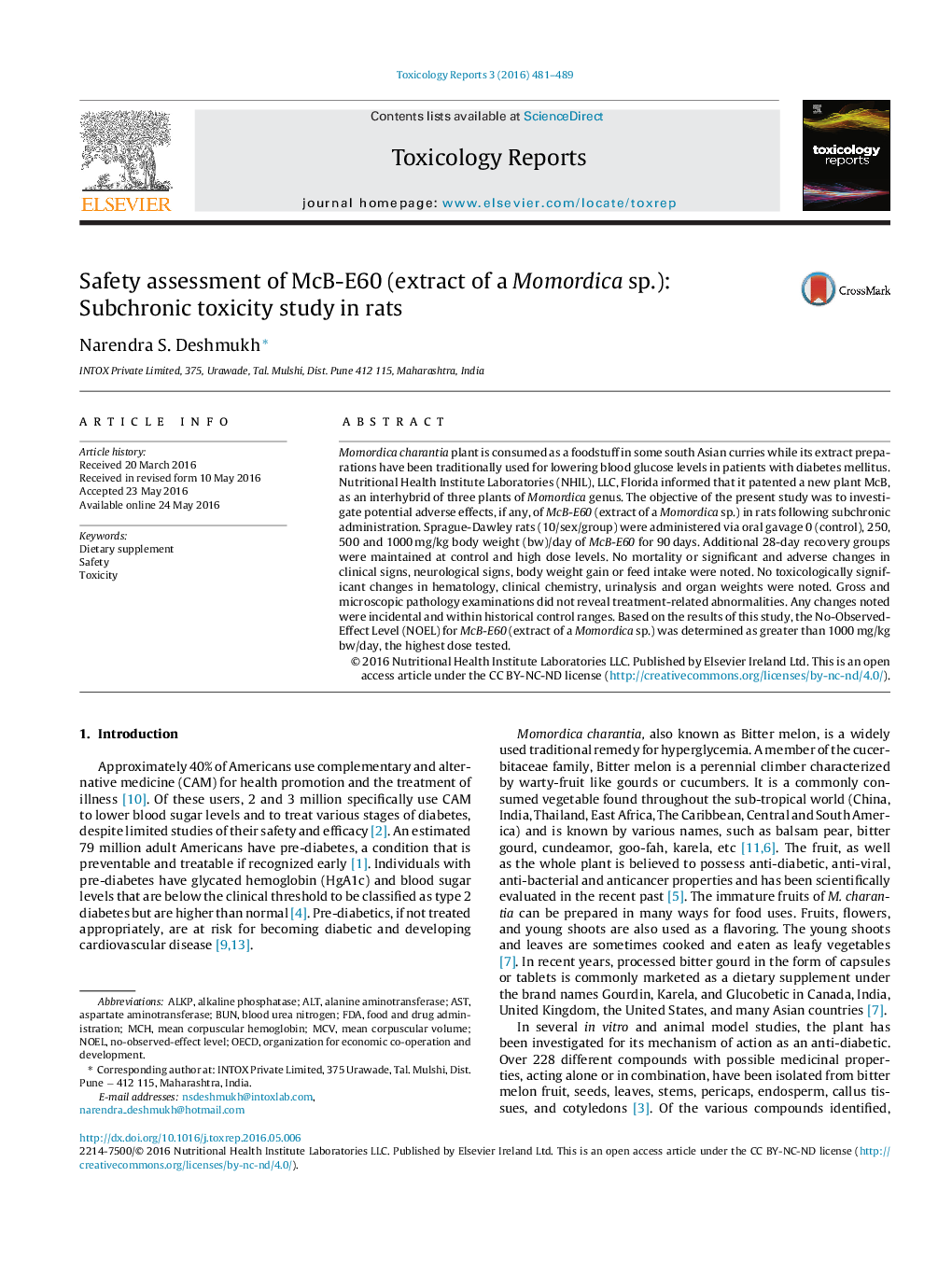| Article ID | Journal | Published Year | Pages | File Type |
|---|---|---|---|---|
| 2572155 | Toxicology Reports | 2016 | 9 Pages |
•Subchronic toxicity of McB-E60 (extract of a Momordica sp.) was investigated in rats.•McB-E60 (extract of a Momordica sp.) administration to rats at doses up to 1000 mg/kg bw/day for 90 days did not reveal any effects.•The No Observed-Effect Level (NOEL) for McB-E60 (extract of a Momordica sp.) was determined as greater than 1000 mg/kg bw/day, the highest dose tested.
Momordica charantia plant is consumed as a foodstuff in some south Asian curries while its extract preparations have been traditionally used for lowering blood glucose levels in patients with diabetes mellitus. Nutritional Health Institute Laboratories (NHIL), LLC, Florida informed that it patented a new plant McB, as an interhybrid of three plants of Momordica genus. The objective of the present study was to investigate potential adverse effects, if any, of McB-E60 (extract of a Momordica sp.) in rats following subchronic administration. Sprague-Dawley rats (10/sex/group) were administered via oral gavage 0 (control), 250, 500 and 1000 mg/kg body weight (bw)/day of McB-E60 for 90 days. Additional 28-day recovery groups were maintained at control and high dose levels. No mortality or significant and adverse changes in clinical signs, neurological signs, body weight gain or feed intake were noted. No toxicologically significant changes in hematology, clinical chemistry, urinalysis and organ weights were noted. Gross and microscopic pathology examinations did not reveal treatment-related abnormalities. Any changes noted were incidental and within historical control ranges. Based on the results of this study, the No-Observed-Effect Level (NOEL) for McB-E60 (extract of a Momordica sp.) was determined as greater than 1000 mg/kg bw/day, the highest dose tested.
